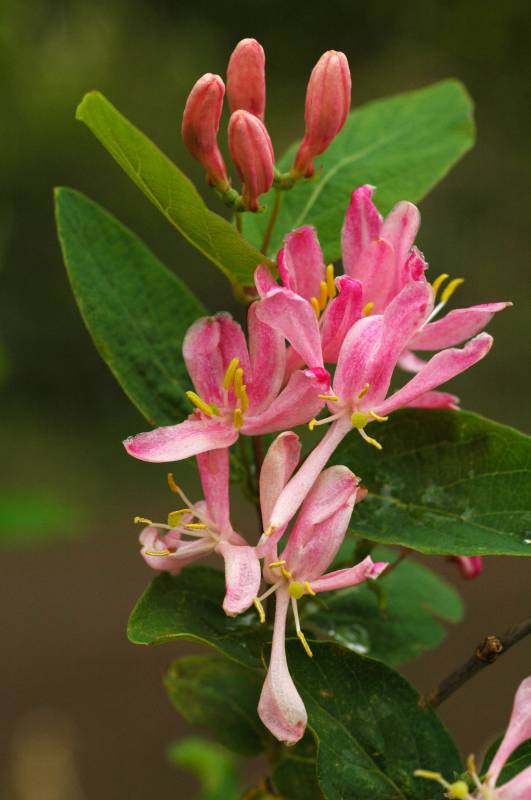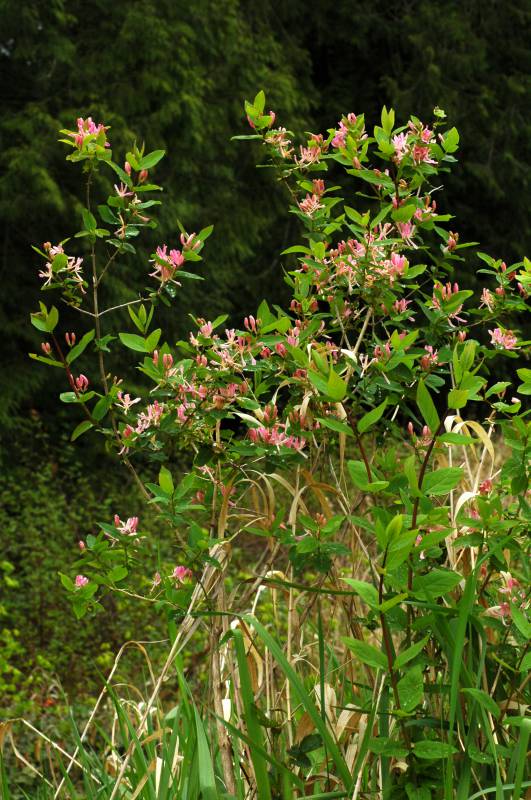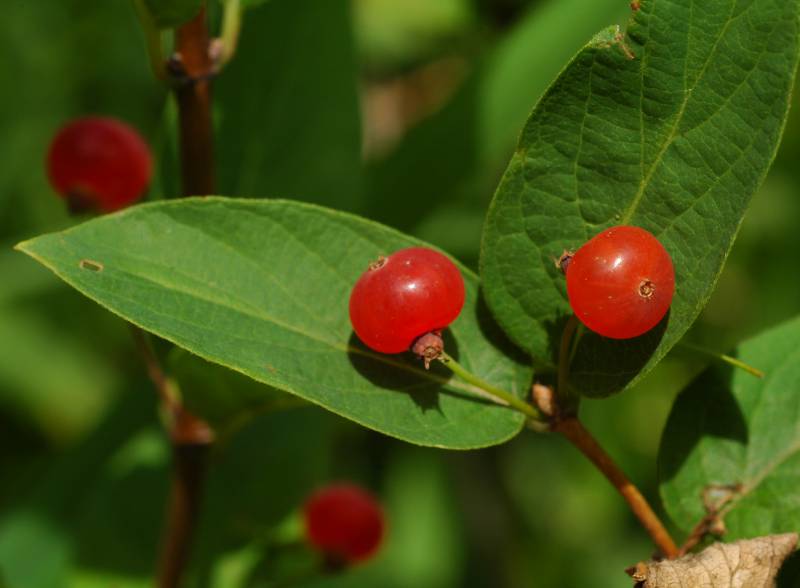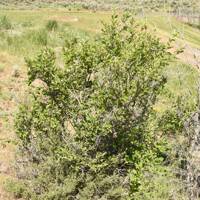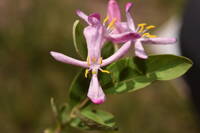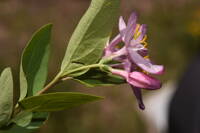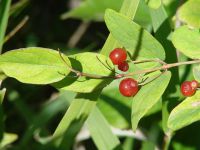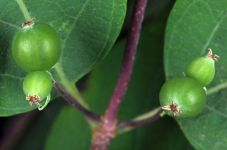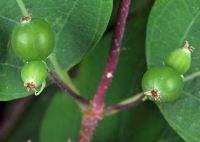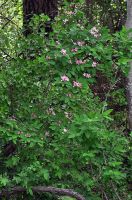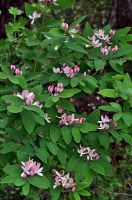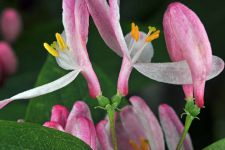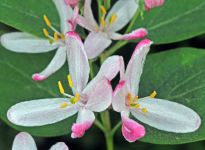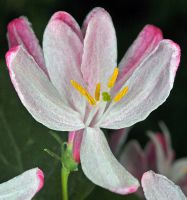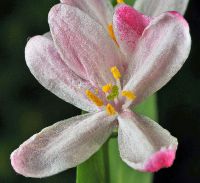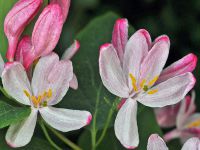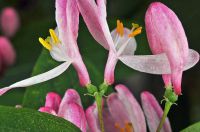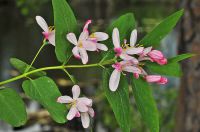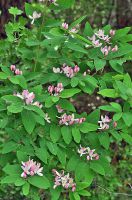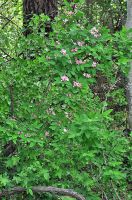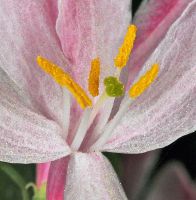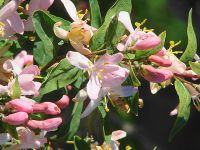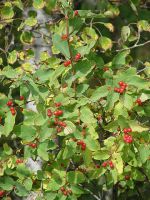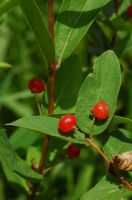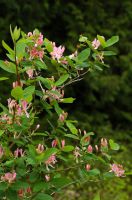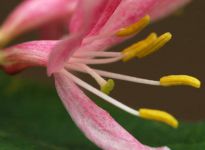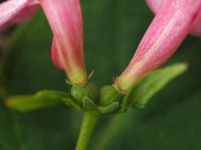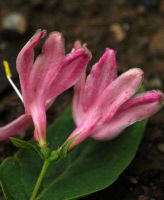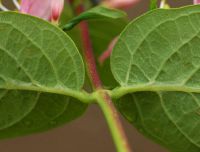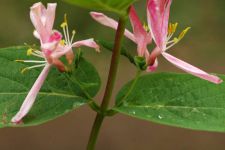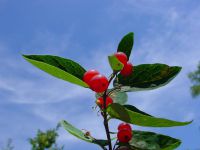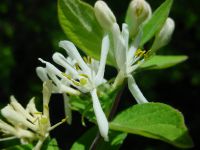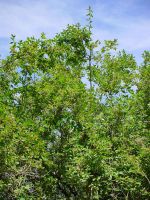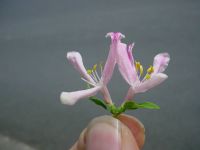Distribution: Occurring chiefly east of the Cascades crest in Washington; British Columbia to California, east across much of North America to the Atlantic Coast.
Habitat: Disturbed areas, woods, and thickets.
Flowers: May-July
Origin: Introduced from Eurasia
Growth Duration: Perennial
Conservation Status: Not of concern
Pollination: Bumblebees, bees, hummingbirds
Shrub, erect, up to 3 m tall; herbage glabrous or lightly hirsute.
Leaves generally 3--6 cm long; blade ovate, base round or somewhat cordate, tip obtuse; upper pairs not fused around stem.
Inflorescence with flowers paired, pedicels 0; peduncle around 15 mm, slender; bracts not leaf-like, not forming involucre, lower lanceolate, spreading, upper round-ovate, erect; calyx limb occasionally deep-lobed; corolla +- 15 mm, white or pink fading pale yellow or yellow, glabrous, weakly 2-lipped, lobes subequal to tube, obovate; stamens well exserted; ovaries of a flower pair free, stigma exserted.
Berry, generally round; seeds usually 2 or greater; about 1 cm diameter, red, orange, yellow.
Publication: Sp. Pl. 1: 173-174. 1753.
PNW Herbaria: Specimen records of Lonicera tatarica in the Consortium of Pacific Northwest Herbaria database
WA Flora Checklist: Lonicera tatarica checklist entry
OregonFlora: Lonicera tatarica information
E-Flora BC: Lonicera tatarica atlas page
CalPhotos: Lonicera tatarica photos

